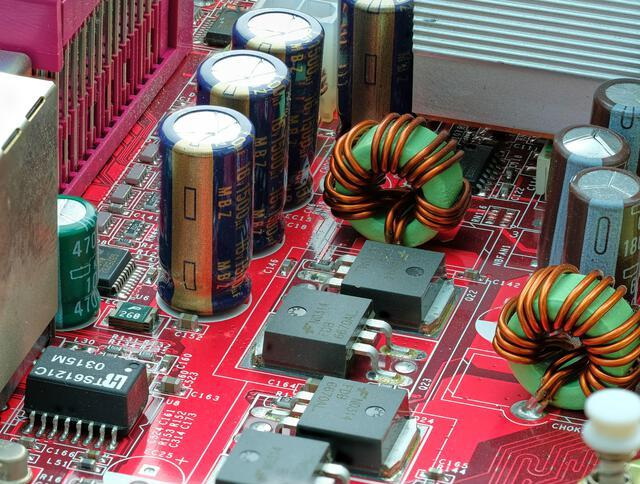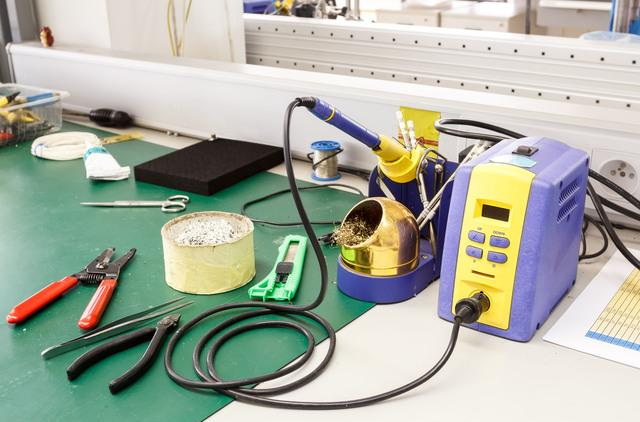Content Menu
● Introduction to SMT Stencil Frames
>> Key Features of SMT Stencil Frames
● Types of SMT Stencil Frames
>> Framed SMT Stencils
>>> Advantages of Framed SMT Stencils
>>> Disadvantages of Framed SMT Stencils
>> Frameless SMT Stencils
>>> Advantages of Frameless SMT Stencils
>>> Disadvantages of Frameless SMT Stencils
>> Specialized Frame Systems
>>> ProFrame®II
>>> QTS Wizard Frame System
● Choosing the Right SMT Stencil Frame
● Materials and Manufacturing Processes for SMT Stencils
>> Stainless Steel
>> Nickel Alloys
>> Laser Cutting
>> Chemical Etching
● Future Trends in SMT Stencil Technology
>> Nano-coatings and Surface Treatments
>> Additive Manufacturing and Customization
>> Integrated Inspection and Quality Assurance
● Step Stencil Technology
>> Benefits of Step Stencils
● Conclusion
● FAQs
>> 1. What is the primary function of an SMT stencil frame?
>> 2. What are the advantages of using framed SMT stencils?
>> 3. What are the benefits of frameless SMT stencils?
>> 4. How do specialized frame systems like ProFrame®II benefit manufacturers?
>> 5. What factors should be considered when choosing an SMT stencil frame?
● Citations:
Surface Mount Technology (SMT) has revolutionized the electronics manufacturing industry by enabling the production of smaller, more efficient, and cost-effective printed circuit boards (PCBs). At the heart of this process lies the SMT stencil, a crucial tool that ensures precise and consistent application of solder paste onto PCB pads. The frame of an SMT stencil plays a vital role in maintaining the stencil's stability and alignment during the printing process. In this article, we will explore the different types of SMT stencil frames available and their characteristics.

Introduction to SMT Stencil Frames
SMT stencil frames are designed to provide a rigid support structure that allows the stencil to be used with printing equipment. Without a frame, the stencil is no more than a thin foil with limited use due to flexure when left unsupported. The frame enables the foil to be stretched taut so that the stencil can gasket to the board, ensuring proper solder paste release onto the circuit board.
Key Features of SMT Stencil Frames
1. Material and Construction: Frames can be made from various materials, including cast aluminum, which is solid, and extruded aluminum, which is hollow. Cast frames are more durable and provide better support, while extruded frames are lighter and less expensive.
2. Size and Compatibility: Frames come in various sizes, ranging from small 8"x10" to large 29"x29" dimensions. The size of the frame is determined by the printer type and the printing equipment used.
3. Stencil Mounting: The stencil foil is mounted in the frame using a mesh border that stretches the foil taut, ensuring smooth aperture walls and precise solder paste application.
Types of SMT Stencil Frames
Framed SMT Stencils
Framed SMT stencils are permanently fixed within a rigid frame, making them ideal for high-volume production. These stencils offer excellent stability during the printing process and are well-suited for automated production lines. They provide superior registration and consistent repeatability, improving yields and reducing defects.
Advantages of Framed SMT Stencils
- Enhanced Accuracy and Consistency: Framed stencils ensure precise solder paste application, which is critical for high-quality PCB assembly.
- Increased Durability: The frame provides additional support, extending the lifespan of the stencil.
- Suitability for Automated Production: Framed stencils are compatible with automated pick-and-place machines, making them ideal for large-scale manufacturing.
Disadvantages of Framed SMT Stencils
- Higher Cost: The additional material and labor required for the frame increase the overall cost.
- Limited Flexibility: Framed stencils are less flexible for adjustments or modifications during the assembly process.
- Storage and Transportation Challenges: The size and weight of framed stencils require more storage space and can increase shipping costs.
Frameless SMT Stencils
Frameless SMT stencils, also known as foil stencils, are flexible and cost-effective options. They are perfect for prototyping and small-scale production, offering greater flexibility for design changes and adaptability to different PCB layouts. Frameless stencils are held in place by a vacuum or tension during the printing process.
Advantages of Frameless SMT Stencils
- Lower Cost: The simpler manufacturing process and smaller size reduce costs.
- Greater Flexibility: Frameless stencils allow for quick design changes and are adaptable to various PCB layouts.
- Smaller Storage Requirements: Without a frame, these stencils require less storage space.
Disadvantages of Frameless SMT Stencils
- Reduced Durability: Lack of support reduces the lifespan of the stencil.
- Increased Risk of Misalignment: Without a frame, there is a higher risk of misalignment or distortion during printing.
Specialized Frame Systems
ProFrame®II
The ProFrame®II is a reusable frame system that allows for quick swapping of new foils. This system reduces stencil costs by eliminating the need for a new frame with each stencil order. It provides superior registration and consistent repeatability, improving yields and reducing defects.
QTS Wizard Frame System
The Wizard Frame System consists of two frames: a plastic Container Frame for protection and a durable, lightweight aluminum stretch frame. This system ensures precise stencil tensioning and is designed for safe handling and efficient printing.

Choosing the Right SMT Stencil Frame
Choosing the right SMT stencil frame depends on several factors, including the type of production (high-volume vs. small-scale), the need for precision and consistency, and the available storage and transportation resources. For high-volume production, framed stencils are preferred due to their stability and compatibility with automated systems. For prototyping or small-scale production, frameless stencils offer cost savings and flexibility.
Materials and Manufacturing Processes for SMT Stencils
The performance and longevity of SMT stencils depend on the choice of materials and manufacturing techniques. Common materials include stainless steel and nickel alloys, which offer durability and resistance to corrosion and high temperatures. Manufacturing processes such as laser cutting and chemical etching are used to create precise apertures for accurate solder paste deposition.
Stainless Steel
Stainless steel stencils are favored for their durability, corrosion resistance, and thermal stability. They endure multiple printing cycles without deformation, ensuring consistent performance over time. Stainless steel alloys, such as the 300 series, provide excellent mechanical properties suitable for various applications.
Nickel Alloys
Stencils made from nickel alloys, like Inconel or Monel, are noted for their high-temperature resistance and mechanical strength. These alloys ensure consistent performance under demanding conditions, crucial for stencil longevity. Nickel alloy stencils are particularly beneficial in environments where extreme conditions are the norm, such as in aerospace or automotive applications.
Laser Cutting
High-energy laser beams create precise aperture walls, ensuring sharp edges. This method is known for its accuracy in defining solder paste deposition areas, vital for reliable electrical connections. Laser cutting provides the precision necessary for intricate PCB designs, ensuring that each aperture is perfectly aligned with the corresponding component on the PCB.
Chemical Etching
This involves selectively removing material using chemical solutions. It allows for intricate aperture designs with precise tolerances, accommodating complex PCB layouts and fine-pitch components. Chemical etching is essential for creating stencils with complex designs, where precision and accuracy are critical for the overall performance of the PCB assembly.
Future Trends in SMT Stencil Technology
The evolution of SMT stencil technology continues to drive innovation:
Nano-coatings and Surface Treatments
Advanced nano-coatings improve solder paste release and reduce adhesion, enhancing print quality and fine-pitch component printing. They also require less frequent cleaning, prolonging stencil life. Nano-coatings represent a significant advancement in stencil technology, offering enhanced performance and reduced maintenance requirements.
Additive Manufacturing and Customization
3D printing enables custom-designed SMT stencils with intricate geometries and tailored aperture designs. This flexibility accommodates unique PCB layouts and component configurations. Additive manufacturing allows for the creation of highly specialized stencils that can meet the specific needs of complex and innovative PCB designs.
Integrated Inspection and Quality Assurance
Emerging technologies integrate automated inspection systems into the stencil printing process, enabling real-time monitoring of solder paste deposition quality. Automated systems detect defects like insufficient solder paste volume or misalignment, ensuring adherence to manufacturing specifications. Integrated inspection technologies are crucial for maintaining high standards of quality and reliability in modern PCB assembly processes.
Step Stencil Technology
Step stencils are designed to handle complex PCBs with varying component sizes. They allow for precise control over solder paste volume, ensuring optimal paste application for both small and large components on the same board. This technology is particularly useful in modern electronics manufacturing, where boards often feature a mix of miniature and large components.
Benefits of Step Stencils
- Improved Paste Volume Control: Step stencils enable precise control over solder paste volume, reducing bridging and ensuring consistent solder joints.
- Enhanced Flexibility: They accommodate a wide range of component sizes, making them ideal for complex PCB designs.
- Increased Efficiency: By optimizing paste application, step stencils improve production efficiency and reduce rework costs.
Conclusion
SMT stencil frames are essential components in the PCB assembly process, providing the necessary support and alignment for precise solder paste application. The choice between framed and frameless stencils depends on production needs, with framed stencils offering stability and consistency for high-volume manufacturing and frameless stencils providing flexibility and cost savings for smaller projects. Understanding the different types of SMT stencil frames available can help manufacturers optimize their production processes and improve the quality of their PCB assemblies.

FAQs
1. What is the primary function of an SMT stencil frame?
- The primary function of an SMT stencil frame is to provide a rigid support structure that allows the stencil to be stretched taut, ensuring proper alignment and stability during the solder paste application process.
2. What are the advantages of using framed SMT stencils?
- Framed SMT stencils offer enhanced accuracy and consistency in solder paste application, increased durability, and suitability for automated production lines. However, they are more expensive and require more storage space.
3. What are the benefits of frameless SMT stencils?
- Frameless SMT stencils are cost-effective, offer greater flexibility for design changes, and require less storage space. However, they have reduced durability and a higher risk of misalignment during printing.
4. How do specialized frame systems like ProFrame®II benefit manufacturers?
- Specialized frame systems like ProFrame®II reduce stencil costs by allowing the reuse of frames with new foils, providing superior registration and consistent repeatability.
5. What factors should be considered when choosing an SMT stencil frame?
- Factors to consider include production volume, need for precision and consistency, available storage and transportation resources, and compatibility with printing equipment.
Citations:
[1] https://jlcpcb.com/blog/guide-to-smt-stencils-in-pcb-assembly
[2] https://www.pcbpower.us/blog/what-are-stencils-and-how-to-use-them-3
[3] https://www.lpkf.com/en/industries-technologies/electronics-manufacturing/smt-stencils-and-micro-cut-parts
[4] https://www.twistedtraces.com/blog/understanding-smt-stencils-the-backbone-of-electronics-manufacturing
[5] https://www.pcb-hero.com/blogs/nancys-column/advantages-and-disadvantages-of-pcb-smt-stencil-processing-methods
[6] https://blueringstencils.com/step-technology/
[7] https://pcbpit.com/smt-stencil-a-comprehensive-guide/
[8] https://www.lpkfusa.com/products-technologies/pcb-production-lasers/about-stencil-manufacturing
[9] https://www.wevolver.com/article/pcb-stencil
[10] https://www.surfacemountprocess.com/a-guide-to-effective-stencil-design.html
[11] https://jlcpcb.com/blog/why-pcb-stencils-are-key-to-high-quality-smt-assembly
[12] https://www.pcbonline.com/blog/pcb-stencil-introduction.html
[13] https://www.stentech.com/company/current-news-events
[14] https://smtnet.com/Forums/index.cfm?fuseaction=view_thread&Thread_ID=14782
[15] https://www.pentalogix.com/products/framed-smt-stencils
[16] https://www.globalwellpcba.com/how-to-choose-a-smt-stencil/
[17] https://www.stentech.com
[18] https://www.soldertools.net/blog/3-tips-to-consider-for-manufacturing-highquality-smt-stencils/
[19] https://jlcpcb.com/blog/how-to-choose-a-smt-stencil
[20] https://www.reddit.com/r/PrintedCircuitBoard/comments/jkea8p/best_method_for_applying_paste_with_stencil/




















